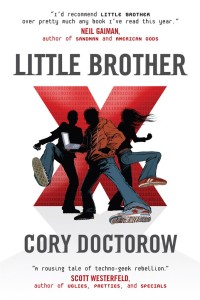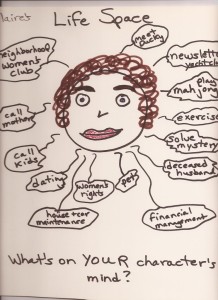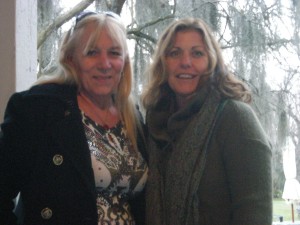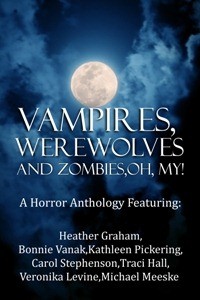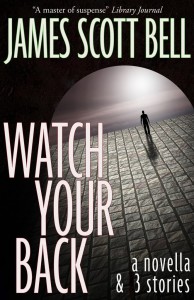I would like to follow up, if I might, from James Scott Bell’s excellent contribution of Sunday last titled “What Will Book Publishing Look Like In Six Months?” I started to write a comment to that essay but it soon became long enough for a post of my own, so here it is, for what it is worth. I will tell you ahead of time that I have NO idea what book publishing will be like in six months, other than it’s going to be more chaotic than it is now. Herewith, however, are a couple of factors that are influencing things now that no one seems to want to talk about.
I read an article recently in the Wall Street Journal concerning the fact that publishers are noticing that self-published e-books offered at a two to three dollar price point are getting an increasing share of the market. Now, traditional publishers will tell you that they simply cannot offer e-books in that price range. For one thing (they say) it only costs three to four dollars per unit to physically publish a book. That may well be. There is an additional problem that traditional publishers face, however, an expense which is also factored into that publisher‘s list price. That problem is the very expensive cost of the Manhattan real estate upon which those who toil on the publishers’ behalf hang their hats each morning. The Konraths and the Crouchs and the Lockes and the Wynnes and yes, the Eislers who are doing quite well on their own are already paying for their own office space. It’s called home. The publishers, on the other hand, have to pick up their fixed cost (those expenses that remain the same whether they sell a million books or don’t sell any) somewhere, and they do it somewhere in the remaining twenty-two bucks of that hardcover you used to buy at Borders. Not all of that remaining money goes to the landlord for the lights and carpet and walls, but some of it does. And authors such James Patterson sell enough books to keep the candles burning. Those e-book prices accordingly aren’t going to be coming down any time soon (but read on).
Trad publishers also have another problem. They have to keep the gnomes of Zurich happy. The gnomes in this case are the parent companies like NewsCorp, Sony, Bertelsmann and the like who are looking at the balance sheets and figuring out how they are going to explain to their stockholders that the reason that the dividend checks aren’t as big this year because this or that publishing company did not perform to expectation. The money for those declared dividends comes out of that unit price as well. With the gents I mentioned earlier, their stockholders are their families. If an independent e-book authors take their families out for an extra nice meal, and the bills all get paid on time, they’re happy. That’s their stockholder report. But the traditional publishers have a constituency that is not so easily satisfied.
One might think, after considering the above, that the traditional publishers are accordingly stuck at a twelve dollar price point for an e-book. I mean, they have fixed costs, stockholders, and, of course, the author needs to be paid too. Actually, however, they are not stuck. At least theoretically. There is a school of thought — one that I happen to subscribe to — that says that at a (much) lower price point the traditional publishers could sell enough e-books to make up the difference in what they lose in selling at a higher price. It is my humble opinion that at some point, sooner rather than later, one of the traditional publishers is going to bite the bullet and price a book by one of their A list authors at three to five dollars, and then sit back with a bottle of Maalox in one hand and a .38 Special in the other, waiting to see if the sales numbers jump high enough to make up for the decrease in sales price per unit. In other words, if I’m selling one thousand books at ten dollars apiece, and I drop the price to five dollars, I have to sell two thousand books to make the same money. I think they can do it. If they do, they’ll put the Maalox to their head. If not…It will be interesting to see which publishing house will walk that plank first, and which author will be holding hands with it. And those offices in mid-town? They are the real estate equivalent of a dead man walking. I know of one gentleman who is running a very successful independent music label imprint out of a hotel lobby. He has a smartphone, a laptop, a pair of ear buds, and access to a nearby Kinkos. He farms out his publicity, promotion, booking, and marketing and he stores his artists’ music on an external hard drive that’s the size of a spiral notebook. He’s making good money. And no one even knows he’s running a business. He is the future.
As we look at the landscape, what I just described could be called the hills. What about the trees? To get a description of that we have to ask a tough question which is also being asked, and answered, by CPA bean counters in boardrooms, even as I write and you read: at what point does the percentage of e-book sales in relation to physical book sales reach the point where the manufacture and sale of physical books — either by genre, or for the industry as a whole — becomes a losing proposition? I have seen opinions that set that point as the moment when e-book sales constitute twenty percent of total books sales. Some genres have reached, and exceeded, that point already. My understanding is that, for the industry as a whole, e-book sales constitute thirteen percent of sales. It may well be somewhat more than that; I doubt that it is less. Whether the point has already been reached, however, or is reached six months or six years from now, it raises some tough questions. Will publishers gradually phase out physical books for all but their perennial best sellers? Will physical books be published in sharply limited qualities, marketed for collectors? There are some genre publishers that have survived quite nicely for years publishing limited editions (Subterranean Press and Cemetery Dance come to mind). But those limited editions come with expensive price tags.
I hate the thought of a world where a physical book is a luxury which can ill be afforded. But we have to consider that scenario as possible, too. The market, and the unseen hand that guides it, does not always come to rest upon a happy medium. At least for some.


